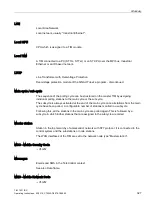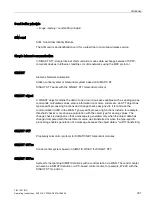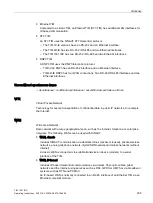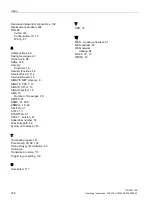
Glossary
TIM 1531 IRC
Operating Instructions, 02/2018, C79000-G8976-C468-02
329
Party line
Setup of the communications bus of the smaller S7-300 CPUs. The communications bus id
physically wired through to the MPI interface.
Party line CPUs are: CPU 312.. / 313.. / 314.. / 315.. to CPU 315-2 DP and C7 devices.
With party line CPUs you can use every type of TIM. You will find details on the Internet at
the following address:
https://support.industry.siemens.com/cs/ww/en/view/24059469
With non party line CPUs (CPU 315-2 PN/DP to CPU 319-3 PN/DP) the MPI interface and
communications bus are separate.
Permanent call
A permanent call does not interrupt the normal polling cycle; it is always executed alternating
with the standard poll from the normal polling cycle.
PG
Programming device
Allows access by the STEP 7 configuration software to the SIMATIC CPU.
PG routing
Using PG routing, it is possible to access programmable modules or modules with
diagnostics capability beyond network boundaries from a programming device (PG) or
computer (PC).
PLMN
Public Land Mobile Network
Worldwide unique identifier of mobile networks. The PLMN is made up of the three-digit
Mobile Country Code (MCC) and the two-or three-digit Mobile Network Code (MNC) of the
network provider.
Polling
Polling mode
The polling mode is a method of data transmission in which a central instance controls the
data exchange with the communication partners.
Using a polling message, the master TIM instructs the connected station TIMs one after the
other to transmit their stored data frames to the master TIM. If a polled station has no stored
data, it responds with an acknowledgment message and the polling cycle then continues by
polling the next station.










































